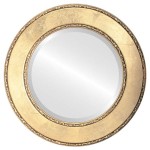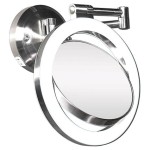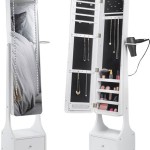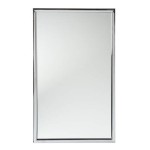Cases of Convex Mirrors
Convex mirrors, characterized by their outwardly curved reflecting surface, offer a unique set of optical properties that make them suitable for various applications. Their ability to provide a wider field of view than plane or concave mirrors contributes significantly to their utility in diverse scenarios, from enhancing road safety to improving security surveillance.
One of the most common applications of convex mirrors is in
vehicle side-view mirrors
. The outward curve allows drivers to see a larger portion of the area behind and to the side of the vehicle, minimizing blind spots. This expanded field of view enhances safety by alerting drivers to the presence of other vehicles, cyclists, or pedestrians that might otherwise be missed. The image formed by a convex mirror is always virtual, upright, and diminished, meaning the objects appear smaller and farther away than they actually are. While this distortion can initially seem disorienting, drivers quickly adapt and learn to judge distances effectively. The warning "Objects in mirror are closer than they appear" printed on many side-view mirrors serves as a reminder of this optical effect.Convex mirrors also play a crucial role in
security and surveillance
. Placed strategically in stores, banks, and other public spaces, they provide a wide-angle view of the surrounding area, enabling security personnel to monitor activity and deter potential theft or vandalism. The expanded field of view allows a single mirror to cover a large area, reducing the number of cameras or security personnel required. Similar to their use in vehicles, the diminished image size allows observers to see a larger area but requires careful interpretation to accurately assess distances and sizes.In
traffic management
, convex mirrors are often installed at intersections with limited visibility. These mirrors allow drivers to see approaching traffic from different directions, improving safety and reducing the risk of collisions. This application is particularly useful in areas with sharp bends, blind corners, or dense vegetation that obstructs the driver's line of sight. The wide field of view allows drivers to anticipate oncoming traffic and make informed decisions, contributing to smoother traffic flow and accident prevention.Beyond these everyday applications, convex mirrors find use in a variety of specialized settings. In
large telescopes
, convex mirrors are sometimes used as secondary reflectors to redirect light towards the eyepiece or other instruments. The specific curvature of the mirror is carefully designed to optimize the telescope's performance and achieve the desired magnification and field of view. Inoptical instruments
such as some periscopes and endoscopes, convex mirrors can be used to manipulate the path of light, allowing for observation of otherwise inaccessible areas.Furthermore, convex mirrors are employed in certain
industrial applications
. For example, they can be used in factories and warehouses to enhance visibility around corners and blind spots, improving safety for workers operating machinery or moving large equipment. The mirrors can also be used to monitor processes or inspect hard-to-reach areas of machinery.The use of convex mirrors in
architectural design
is also noteworthy. Large convex mirrors can be incorporated into interior spaces to create an illusion of spaciousness and enhance the aesthetic appeal. They can also be strategically placed to reflect natural light and brighten interior areas. In exterior applications, convex mirrors can be integrated into building facades to reflect the surrounding environment and create interesting visual effects.Another application lies within the realm of
safety mirrors for home use
. Convex mirrors can be placed strategically within a home, particularly at the top of staircases or around blind corners, to improve visibility and prevent accidents. They offer an affordable and effective way to enhance safety within the domestic environment.Finally, convex mirrors have found applications in the
art world
. Artists have utilized the distorted reflections produced by convex mirrors to create unique and intriguing visual effects in their work. The distorted perspectives and altered sense of space offered by these mirrors can add a surreal or abstract quality to artistic compositions.The versatility of convex mirrors stems from their fundamental optical properties, making them valuable tools in diverse fields. From enhancing road safety to facilitating surveillance and improving industrial processes, the applications of convex mirrors continue to expand as technology evolves and new applications are discovered.

Concave Mirrors And Convex Ray Diagrams Image Formation Examples

Convex Mirror Image Formation Conditions Ray Diagram Uses
Is It Possible For A Convex Mirror To Produce Real Image When The Object Virtual Quora

Convex Mirror Image Formation Conditions Ray Diagram Uses

Concave Mirrors And Convex Ray Diagrams Image Formation Examples

Convex Mirror Image Formation Conditions Ray Diagram Uses

Image Formation By Spherical Mirror Geeksforgeeks

Show That All Images Formed By A Convex Mirror Is Virtual Physics Ray Optics And Optical Instruments 9856423 Meritnation Com

Convex Mirror Definition Equation Examples Lesson Transcript Study Com

Ray Diagrams When An Object Is Placed Opposite To A Concave Mirror All Six Cases








